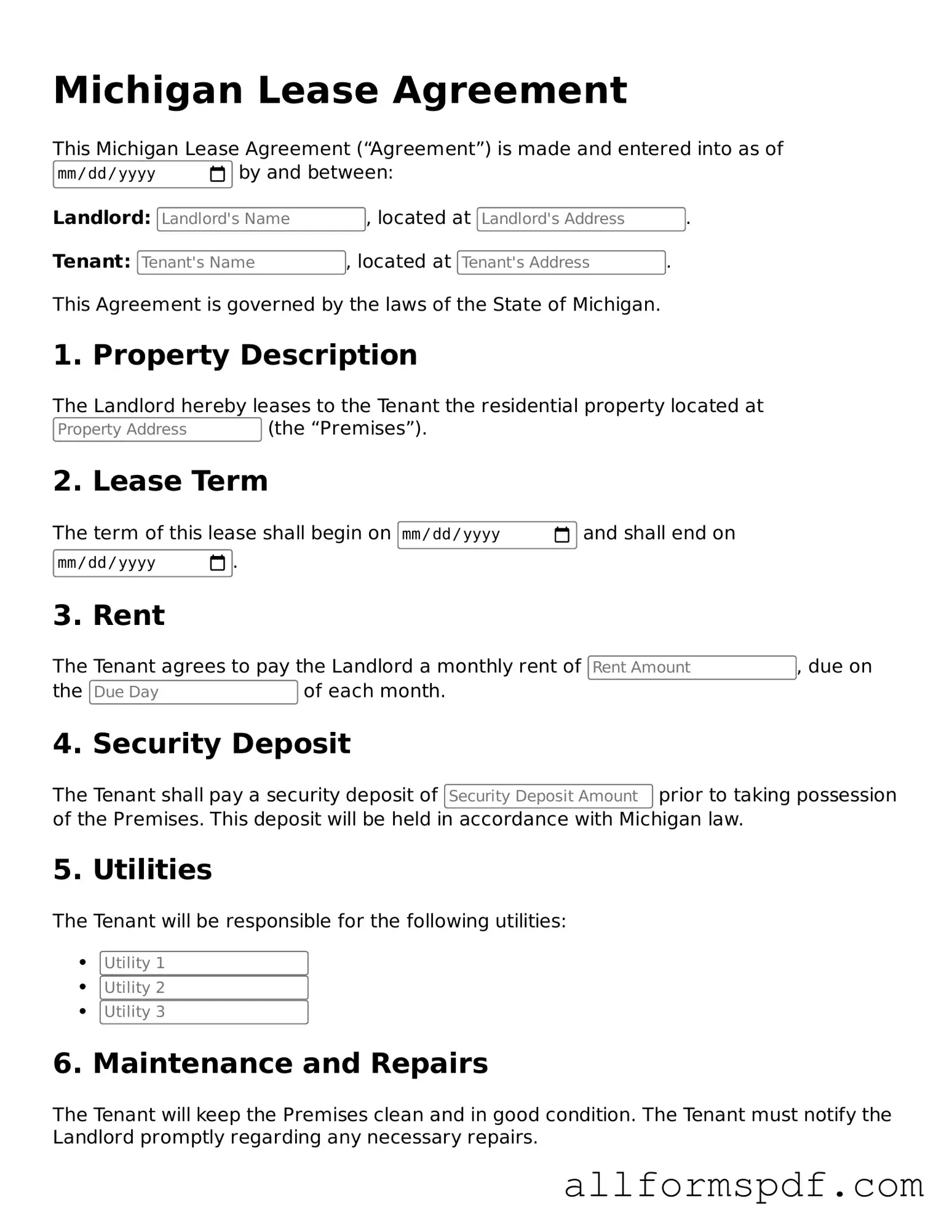Filling out a lease agreement can be a daunting task, especially for first-time renters. In Michigan, the Lease Agreement form is a crucial document that outlines the terms of the rental arrangement. However, many individuals make common mistakes that can lead to misunderstandings or disputes later on. Being aware of these pitfalls can help ensure a smoother leasing experience.
One frequent error is failing to include all necessary personal information. When completing the form, it is essential to provide accurate details such as full names, contact information, and identification numbers. Omitting this information can lead to complications in communication and verification of identity. It is advisable to double-check that all parties involved are clearly identified.
Another mistake often made is neglecting to read the entire agreement before signing. Many individuals may skim through the document, assuming they understand the terms. However, this can result in overlooking important clauses regarding rent payment, maintenance responsibilities, and termination procedures. Taking the time to thoroughly review the lease can prevent future disputes and misunderstandings.
In addition, some renters fail to clarify the duration of the lease. This aspect is vital as it defines how long the tenant will occupy the property. Whether it’s a month-to-month arrangement or a fixed-term lease, specifying the duration helps both parties understand their commitments. Not addressing this can lead to confusion about when the lease ends and what happens afterward.
Another common oversight involves not documenting the condition of the property at the time of move-in. It is crucial to conduct a walkthrough and note any existing damages or issues. This documentation protects tenants from being held responsible for pre-existing conditions when they eventually move out. A written record, ideally with photographs, can serve as valuable evidence if disputes arise.
Lastly, many people overlook the importance of understanding the rules regarding security deposits. The lease should clearly outline the amount of the deposit, the conditions for its return, and any deductions that may apply. Failing to grasp these details can lead to financial loss and frustration at the end of the lease term. Knowing your rights and responsibilities concerning the security deposit is essential for a positive rental experience.
